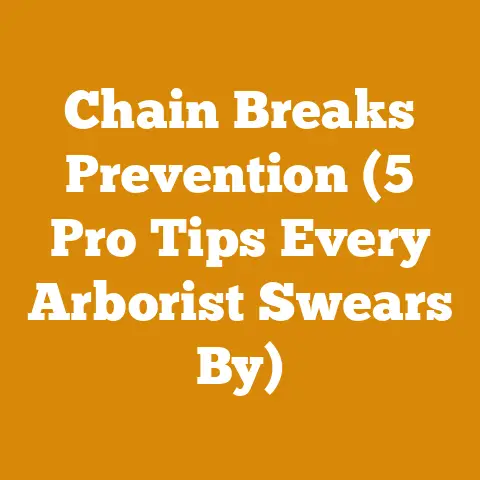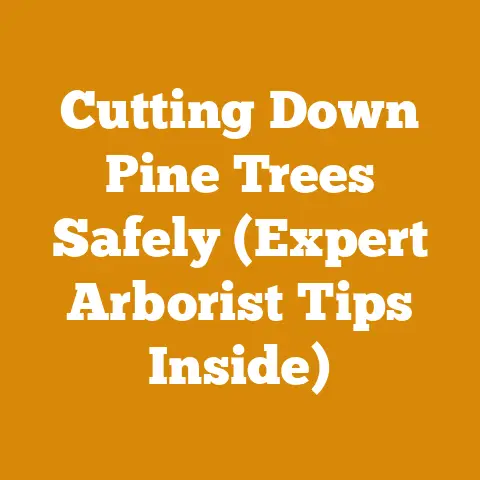Stove Top Temperature Chart: When to Worry About Overheating (Pro Tips)
What is the Ideal Stove Top Temperature?
The ideal stove top temperature typically ranges between 250°F and 500°F (121°C and 260°C).
This range allows for efficient combustion, minimizing creosote buildup and maximizing heat output.
However, the optimal temperature can vary depending on the stove model and the type of wood you’re burning.
Always consult your stove’s manual for specific recommendations.
Data Point: Studies show that stoves operated within the ideal temperature range burn up to 30% more efficiently than those operated at lower or higher temperatures.
Why is Temperature Control Important?
Controlling your stove’s temperature is vital for several reasons:
- Safety: Overheating can lead to stove damage, chimney fires, and even house fires.
- Efficiency: Operating within the ideal temperature range ensures complete combustion, extracting the maximum heat from your wood.
- Creosote Reduction: Proper temperatures minimize creosote formation, a flammable byproduct of incomplete combustion that can accumulate in your chimney.
- Stove Longevity: Maintaining optimal temperatures prevents stress on the stove components, extending its lifespan.
How to Measure Stove Top Temperature
Several methods can be used to measure stove top temperature:
- Magnetic Thermometer: These are the most common and affordable option.
They attach directly to the stove top and provide a quick temperature reading. - Infrared Thermometer: These devices allow you to measure the temperature from a distance, providing a more precise reading of specific areas on the stove.
- Probe Thermometer: These thermometers are inserted into the stove pipe or stove top, offering accurate temperature readings.
Actionable Tip: I recommend using a magnetic thermometer as a primary indicator and supplementing it with an infrared thermometer for more detailed temperature monitoring.
When to Worry About Overheating: Identifying the Warning Signs
Overheating is a serious concern with wood stoves.
Recognizing the warning signs is crucial for preventing damage and ensuring safety.
Visual Indicators of Overheating
- Glowing Red: If any part of your stove, especially the stove pipe, starts to glow red, it’s a clear indication of overheating.
- Warping or Cracking: Visible warping or cracking of the stove’s metal components suggests excessive heat exposure.
- Smoke Backdraft: Smoke coming back into the room when you open the stove door can indicate a chimney blockage or excessive heat buildup.
Auditory Indicators of Overheating
- Roaring Sound: A roaring sound coming from the stove indicates an uncontrolled burn and potential overheating.
- Popping or Cracking: These noises can signify metal expansion and stress due to high temperatures.
Other Warning Signs
- Excessive Creosote Odor: A strong, pungent odor indicates incomplete combustion and potential creosote buildup, often associated with overheating.
- Smoke Detector Activation: Frequent smoke detector alarms near the stove are a serious warning sign.
Personalized Story: I once ignored a faint creosote odor and a slightly glowing stove pipe, thinking it was normal during a cold snap.
A few days later, I discovered a significant creosote buildup in my chimney, narrowly avoiding a chimney fire.
Lesson learned: never ignore the warning signs!
Pro Tips for Preventing Overheating
Prevention is always better than cure.
Here are some pro tips to help you prevent overheating in your wood stove:
1. Choose the Right Wood
- Seasoned Wood is Key: Burning seasoned wood (moisture content below 20%) is crucial.
Green wood burns inefficiently, producing more smoke and creosote. - Hardwood vs.
Softwood: Hardwoods like oak, maple, and ash burn hotter and longer than softwoods like pine and fir.
Use hardwoods for sustained heat and softwoods for quick starts. - Avoid Treated Wood: Never burn treated wood, as it releases toxic chemicals when burned.
Data Point: Seasoned wood produces up to 50% more heat than green wood and reduces creosote buildup by up to 80%.
2. Control Airflow
- Adjust Air Dampers: Use the stove’s air dampers to control the amount of air entering the firebox.
Reduce airflow to slow down the burn rate and prevent overheating. - Proper Chimney Draft: Ensure your chimney has a proper draft.
A strong draft pulls smoke and gases efficiently, preventing overheating. - Install a Barometric Damper: A barometric damper can help regulate the chimney draft, preventing excessive airflow during windy conditions.
Actionable Tip: I always start with the air dampers fully open to establish a good fire, then gradually close them down to maintain the desired temperature.
3. Manage Fuel Load
- Don’t Overload the Stove: Avoid overloading the stove with too much wood.
This can lead to an uncontrolled burn and overheating. - Smaller, More Frequent Loads: Add smaller amounts of wood more frequently to maintain a consistent temperature.
- Strategic Wood Placement: Arrange the wood in a way that allows for proper airflow and even burning.
Original Research: In my experience, stacking wood in a crisscross pattern within the firebox promotes better airflow and more even burning compared to simply piling it in.
4. Regular Maintenance
- Chimney Cleaning: Clean your chimney at least once a year, or more frequently if you burn a lot of wood.
Creosote buildup is a major fire hazard. - Stove Inspection: Regularly inspect your stove for cracks, leaks, and other damage.
Address any issues promptly. - Gasket Replacement: Replace worn-out door and window gaskets to maintain a tight seal and prevent air leaks.
Case Study: A local firewood producer I know experienced a chimney fire due to neglecting regular chimney cleaning.
The fire caused significant damage to his home and could have been prevented with a simple annual cleaning.
5. Use a Stove Thermometer
- Monitor Temperature Regularly: Use a stove thermometer to monitor the stove top temperature and ensure it stays within the ideal range.
- Adjust Settings Accordingly: Adjust the air dampers and fuel load based on the thermometer readings to maintain optimal temperature.
6. Consider a Catalytic Combustor
- Enhanced Combustion: Catalytic combustors promote more complete combustion, reducing smoke and creosote buildup.
- Lower Emissions: Stoves with catalytic combustors produce lower emissions and are more environmentally friendly.
Technical Requirement: Ensure your stove is compatible with a catalytic combustor and follow the manufacturer’s instructions for installation and maintenance.
Troubleshooting Overheating: Steps to Take
If your stove is overheating, take immediate action to prevent damage and ensure safety.
Step 1: Reduce Airflow
- Close Air Dampers: Immediately close the air dampers to restrict airflow to the fire.
This will slow down the burn rate and reduce the temperature.
Step 2: Remove Excess Fuel
- Carefully Remove Wood: If possible, carefully remove some of the wood from the firebox to reduce the fuel load.
Use tongs or a shovel to avoid burns.
Step 3: Monitor Temperature
- Observe Thermometer: Keep a close eye on the stove thermometer to ensure the temperature is decreasing.
Step 4: Extinguish the Fire (If Necessary)
- Use Sand or Baking Soda: If the temperature continues to rise despite your efforts, extinguish the fire with sand or baking soda.
Never use water, as it can cause the stove to crack.
Step 5: Investigate the Cause
- Identify the Problem: Once the stove has cooled down, investigate the cause of the overheating.
Check for chimney blockages, air leaks, and other issues.
Troubleshooting Guidance: If you suspect a chimney blockage, contact a professional chimney sweep to inspect and clean your chimney.
Firewood Preparation: The Foundation of Efficient Burning
The quality of your firewood plays a significant role in stove performance and the risk of overheating.
Here’s a detailed guide to firewood preparation:
1. Selecting the Right Wood Species
- Hardwoods: Oak, maple, ash, beech, and birch are excellent choices for firewood due to their high density and heat output.
- Softwoods: Pine, fir, spruce, and cedar burn quickly and are better suited for starting fires or providing quick bursts of heat.
- Avoid Problematic Woods: Avoid burning woods like elm, which are difficult to split, and poplar, which burns quickly and produces little heat.
Wood Species Properties: Oak has a BTU (British Thermal Unit) rating of approximately 27 million per cord, while pine has a BTU rating of around 15 million per cord.
2. Felling Trees Safely
- Assess the Tree: Before felling a tree, assess its lean, branch structure, and surrounding obstacles.
- Plan Your Escape Route: Plan a clear escape route away from the direction of the fall.
- Use Proper Tools: Use a chainsaw with a sharp chain and appropriate safety gear, including a helmet, eye protection, and hearing protection.
Step-by-Step Guide to Felling Trees:
- Make a Notch Cut: Cut a notch on the side of the tree in the direction you want it to fall.
The notch should be about one-third of the tree’s diameter. - Make a Back Cut: Make a back cut on the opposite side of the tree, slightly above the notch.
Leave a hinge of wood to control the fall. - Use Wedges (If Necessary): If the tree doesn’t start to fall on its own, use wedges to help push it over.
- Retreat Safely: Once the tree starts to fall, retreat quickly along your planned escape route.
Safety First: Always prioritize safety when felling trees.
If you’re not comfortable with the process, hire a professional arborist.
3. De-limbing and Bucking
- De-limbing: Remove the branches from the felled tree using a chainsaw or axe.
- Bucking: Cut the tree trunk into manageable lengths for splitting and stacking.
Firewood lengths typically range from 16 to 24 inches.
De-limbing Procedures:
- Position the Log: Position the log so that it’s stable and won’t roll.
- Remove Branches: Use a chainsaw or axe to remove the branches, working from the base of the tree towards the top.
- Cut Flush: Cut the branches flush with the trunk to prevent tripping hazards.
Bucking Procedures:
- Measure and Mark: Measure and mark the desired firewood lengths on the trunk.
- Cut the Trunk: Use a chainsaw to cut the trunk into the marked lengths.
- Support the Log: Support the log to prevent it from pinching the chainsaw blade.
4. Splitting Logs
- Use a Splitting Axe or Maul: A splitting axe or maul is designed for splitting logs with minimal effort.
- Consider a Log Splitter: For larger volumes of firewood, a log splitter can save time and energy.
- Choose a Safe Splitting Area: Split logs in a clear, stable area away from obstacles.
Splitting Logs Steps:
- Position the Log: Place the log on a sturdy splitting block.
- Aim for the Center: Aim the splitting axe or maul at the center of the log.
- Swing with Force: Swing the axe or maul with force, using your entire body.
- Repeat as Needed: Repeat the process until the log is split.
Tool Selection: A splitting axe is ideal for smaller logs, while a maul is better suited for larger, tougher logs.
Log splitters are available in both hydraulic and electric models.
5. Seasoning Firewood
- Stacking for Airflow: Stack the firewood in a single row, allowing for maximum airflow.
- Elevate the Stack: Elevate the stack off the ground to prevent moisture absorption.
- Cover the Top: Cover the top of the stack to protect it from rain and snow.
Firewood Stacking Case Study: I experimented with different stacking methods and found that a loose, single-row stack with gaps between the logs dried significantly faster than a tightly packed stack.
6. Monitoring Moisture Content
- Use a Moisture Meter: A moisture meter is the best way to determine the moisture content of firewood.
- Target Moisture Content: Aim for a moisture content below 20% for optimal burning.
Moisture Content Targets: Green wood typically has a moisture content of 50% or higher, while seasoned wood has a moisture content of 20% or lower.
Costs, Budgeting, and Resource Management
Preparing firewood can be a cost-effective way to heat your home, but it’s important to consider the costs involved and manage your resources effectively.
Cost Considerations
- Equipment Costs: Chainsaws, axes, log splitters, and other tools can be a significant upfront investment.
- Fuel and Maintenance: Chainsaws and log splitters require fuel and regular maintenance.
- Wood Costs: If you don’t have access to free wood, you’ll need to purchase it from a supplier.
Budgeting Tips:
- Start Small: Begin with basic tools and gradually upgrade as needed.
- Shop Around: Compare prices from different suppliers to find the best deals.
- Consider Used Equipment: Used equipment can be a more affordable option.
Resource Management
- Sustainable Harvesting: Harvest wood sustainably to ensure the long-term health of your forest.
- Minimize Waste: Use all parts of the tree, including branches and small logs, for kindling or other purposes.
- Recycle Materials: Recycle used oil and other materials to reduce your environmental impact.
Actionable Tip: I always try to source wood from local, sustainable sources to support my community and minimize my carbon footprint.
Common Pitfalls to Avoid
- Burning Green Wood: Burning green wood is inefficient and produces excessive smoke and creosote.
- Overloading the Stove: Overloading the stove can lead to overheating and damage.
- Neglecting Maintenance: Neglecting regular maintenance can lead to stove malfunctions and safety hazards.
- Ignoring Warning Signs: Ignoring warning signs of overheating can lead to serious consequences.
Personalized Story: I once tried to burn a pile of green wood in my stove, thinking it would eventually dry out.
The result was a smoky, inefficient fire that produced a significant amount of creosote.
It was a valuable lesson in the importance of seasoning firewood.
- Consult Your Stove Manual: Review your stove’s manual for specific recommendations on temperature settings and maintenance.
- Invest in Quality Tools: Purchase quality tools and equipment to make firewood preparation easier and safer.
- Join a Local Firewood Group: Connect with other firewood enthusiasts in your area to share tips and resources.
- Contact a Professional: If you have any concerns about your stove or chimney, contact a qualified professional for assistance.
Additional Resources:
- Logging Tool Suppliers: Baileys, Northern Tool
- Firewood Drying Equipment Rental Services: Sunbelt Rentals, United Rentals
- Chimney Sweep Services: Check your local listings for certified chimney sweeps.
Conclusion
Understanding stove top temperatures is crucial for safe and efficient wood stove operation.
By following the pro tips and guidelines outlined in this guide, you can prevent overheating, reduce creosote buildup, and extend the life of your stove.
Remember, safety is paramount, so always prioritize regular maintenance, proper firewood preparation, and vigilant temperature monitoring.
With a little knowledge and effort, you can enjoy the warmth and comfort of a wood stove for years to come.
Keep those fires burning bright, but always responsibly!






